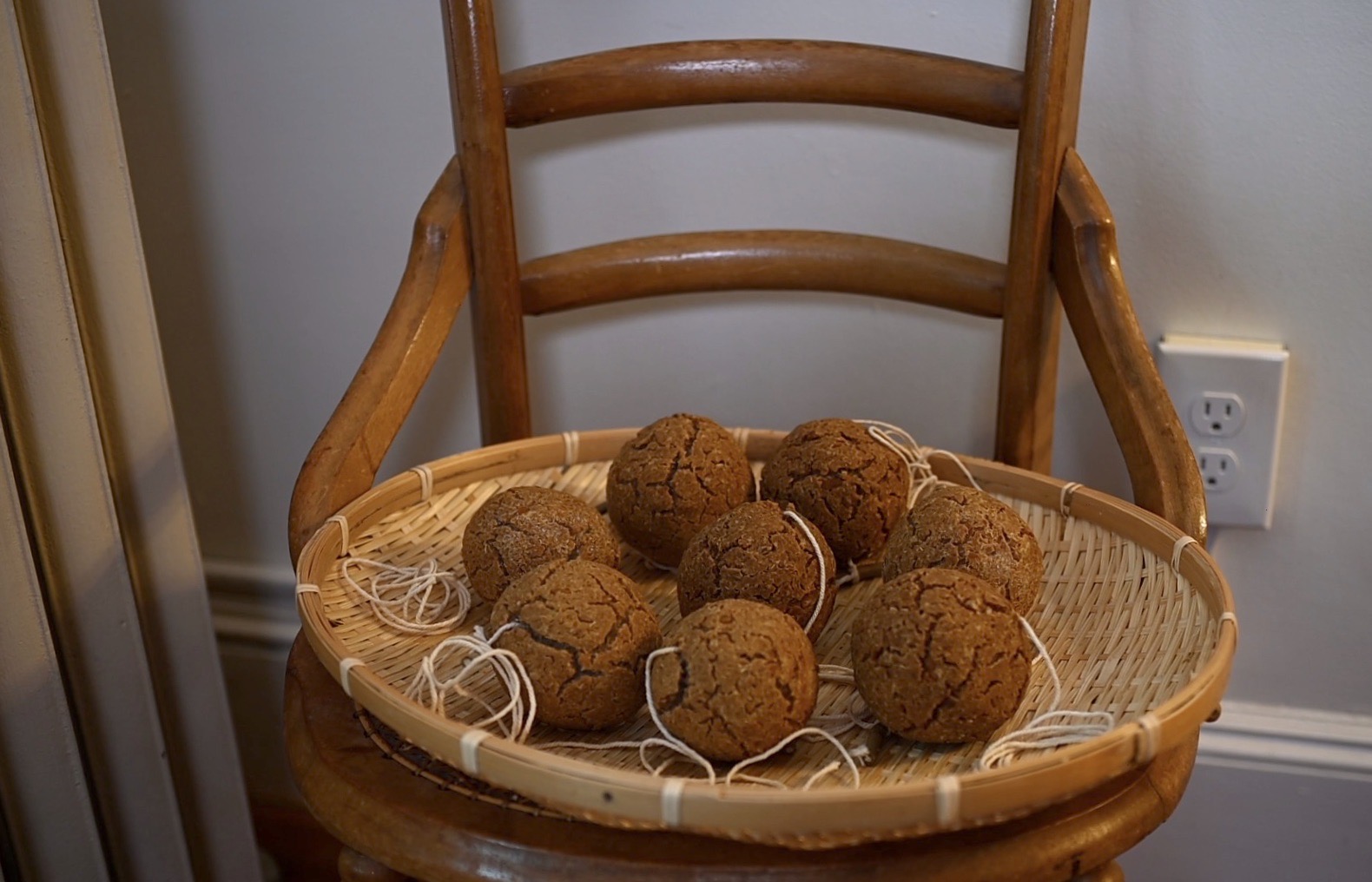
drying the balls in a warm area
How long does it take to make commercial soy sauce–do you know? I don’t, but I do know this Homemade Soy Sauce takes at least ONE year!
I’m deeply fascinated by the way Korean soy sauce is made. I lost myself dreaming back in time while researching it, and I wanted to be able to make it at home so badly. There was a lot of work involved, and initially I was too afraid to start.
However, in December 2017, I overcame my fear and made my first batch of Homemade Soy Sauce. Not knowing how it would turn out, I filmed every step of the process.
The result wasn’t exactly like I imagined. I wanted to have a lot of fermented bean paste that I could use as miso. There was too much fungi in the paste however, and I was afraid to use that part.
However, the taste was amazing and the process of making it was worth sharing. So, I finished the video and shared my experience via my Youtube Channel in 2019. As a result, I got a lot of reviews–both positive and of course, some negative ones too.
I have learned so much from this experience, not only about how to make soy sauce, but also a lot more about other related products as well.
I also learned to appreciate the foods I eat more, to be patient and not to rush, and best of all I learned that high quality things can’t be made fast!
When I published the first video about making this Homemade Soy Sauce, most people thought I only made it just for the video, but they were wrong. I really wanted to make my own soy sauce to eat.
I’m so obsessed with making soy sauce and learned to make it the Japanese way too. It’s very hard to say which one I like more. The methods are different, but the idea of a long fermentation is the same.
After my first batch, I knew I wanted to make my own soy sauce moving forward. However, I was curious if there were options of high quality soy sauce for me to buy out there. I found out that there are a few brands of them, but the prices are incredibly high, and I can’t afford to buy them to use for my daily cooking.
Then, out of curiosity, I tried to find out how the more affordable commercial brands I buy are made. To my disappointment, they wouldn’t share the information. As I have heard that commercial soy sauce uses alcohol to process it and only takes a few weeks to finish it, I’m sure the one I buy is no better.
Knowing this, I’m even more determined to make my own.
This time, I will plan better and change a few things to make my Homemade Soy Sauce method more practical so I can make it as often as I want, and hoping I don’t have to buy it eventually.
Instead of making the soybean bricks in rectangles, I changed them to round balls. Now instead of wrapping string around like wrapping a present, I poke the string through the bean balls, as this way I can reuse the string again.
Note: I adapted this method from watching the video from the taste of wisdom. The bean blocks I saw were in different shapes than rectangular ones and I knew I could make them in any shape.
To make sure I won’t end up with too much fungi at the end, I make sure to fully submerge the bean balls in the brine– we’ll see.
I hope it inspires you to make this with me. It will be really fun if you do as we can taste this about the same time a year or so from now.
Ready to make Homemade Soy Sauce? Let me show you how!
Ingredients for Homemade Soy Sauce:
Note: Feel free to make the amount you want using this as a formula. I’m showing this in two one-gallon glass jars.
- 6 cups (1,420 ml) of organic non-GMO soybeans
- 4 cups (950 ml) of good salt of your choice
- 16 cups (4 L) of filtered water. Note: For a quicker dissolving, I use 4 cups (1 L) of hot water and 12 cups (3 L) room temperature water. From what I learned, spring water is best, but I just use filtered water as I didn’t want to buy spring water in plastic bottles. Are you with me?
- A few small pieces of pure wood charcoal, dried chilis, and dried Jujubes (Korean plum fruit)
- Some more filtered water for soaking and cooking the beans
- Courage, patience, and a good vibe!
Equipment:
- Two 1-gallon glass jars. Note: you can use earthen wares if you have them. They are too expensive for me, plus I want to be able to see what’s going on in the jars, and glass jars work really well for that.
- 2 pieces of cheesecloth
- Some string and a wood stick (I use cotton string and a small bamboo stick)
Instructions for Homemade Soy Sauce:
- First day: sort out the bad beans. Wash well and cover them with filtered water, then let them soak overnight.
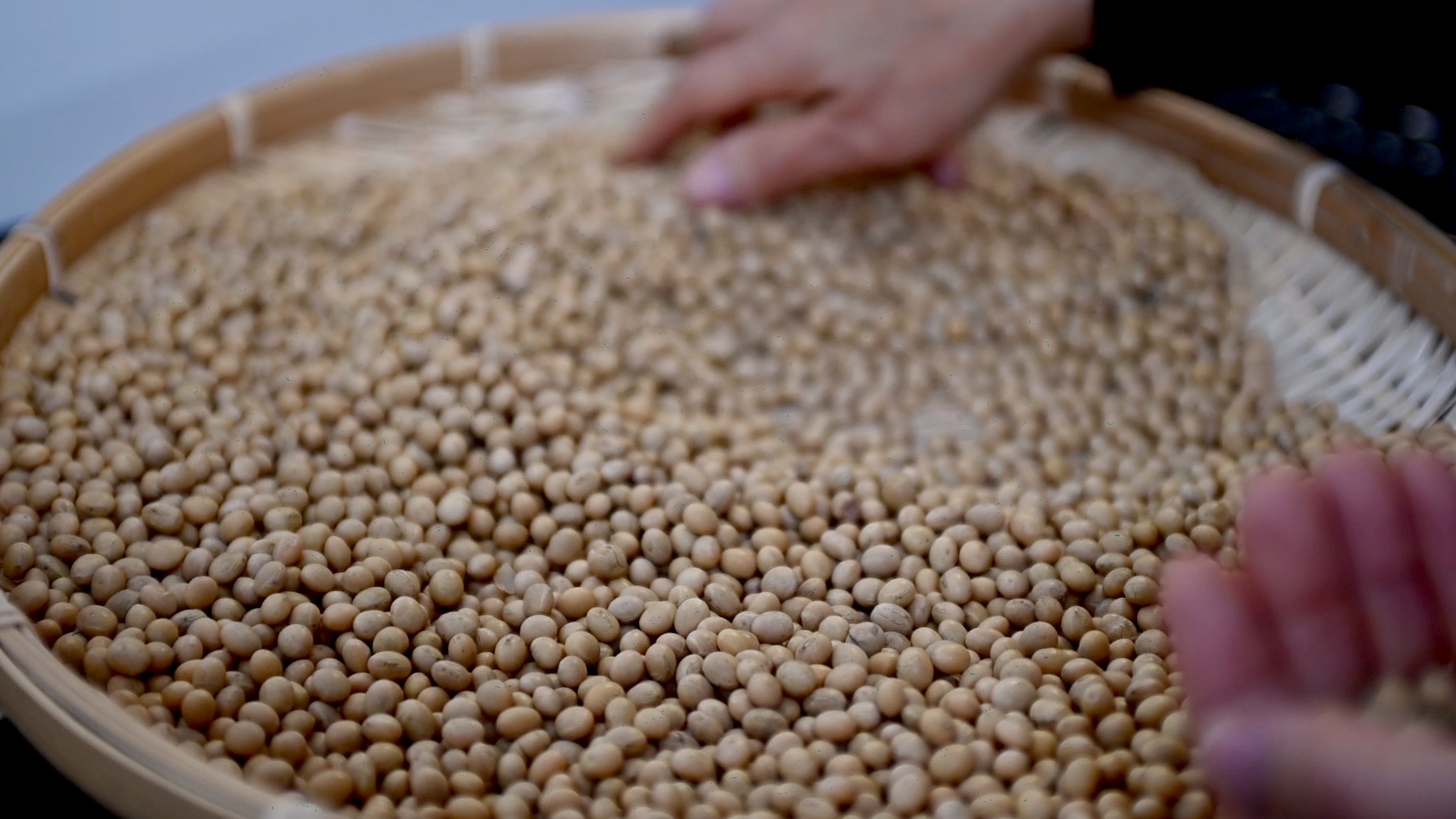
sort out the bad soybeans
- Second day: dump the soaking water and rinse well. Transfer them to a big pot, cover with filtered water and cook on medium heat until it reaches a boil. Skim off the foam if you like. Turn the heat down and simmer until the beans are soft. Note: If the water gets too low before the beans are done, just add a little more. This step can take a few hours.
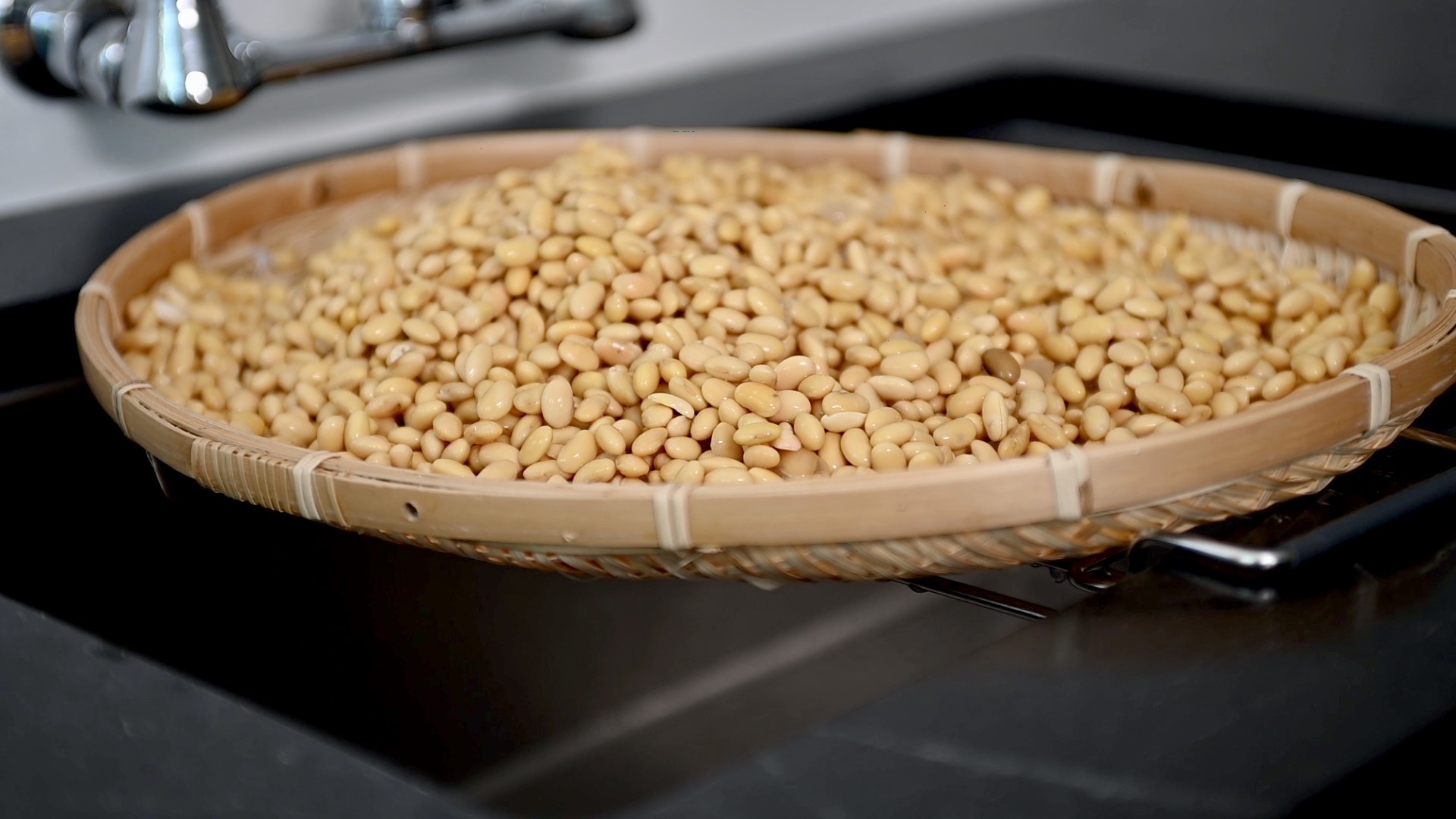
drain the beans after soaking
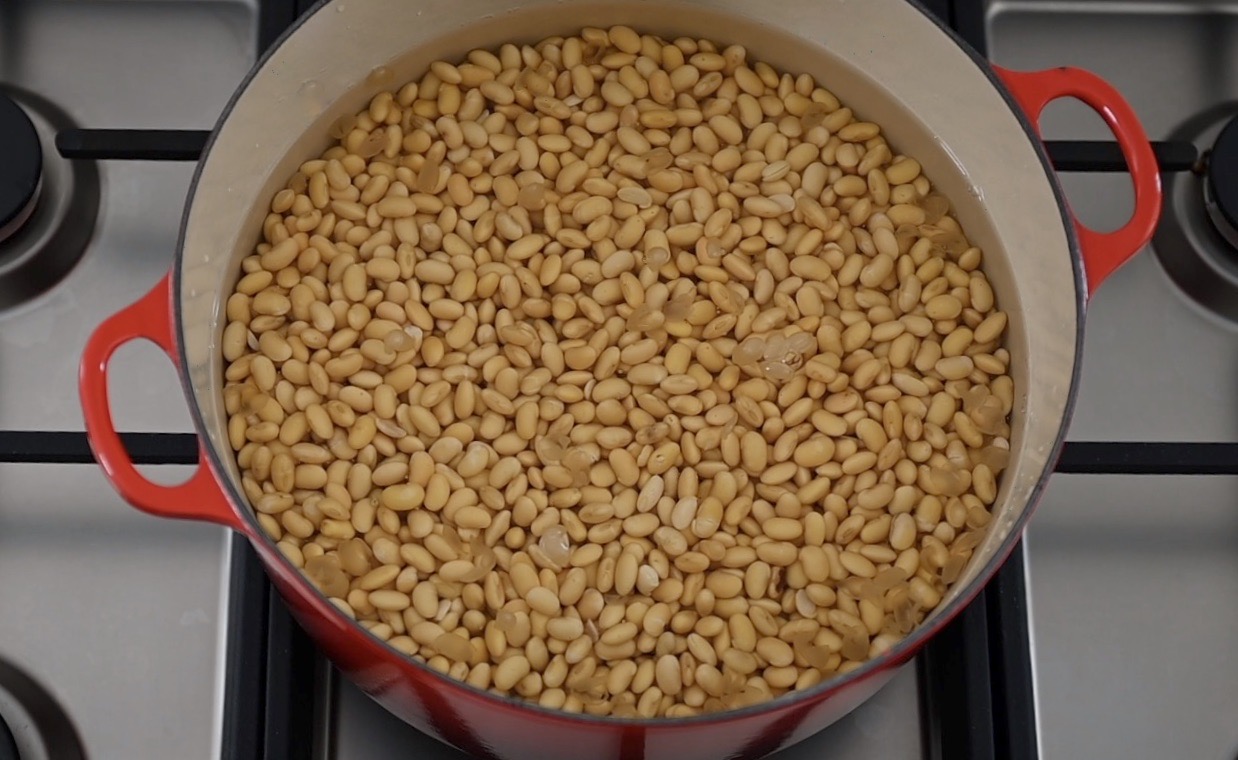
cook the beans in a big pot
- While the beans are cooking, let’s prepare the string. A.) Measure the length of the string according to where you want to hang the bean balls. I cut mine about 4 ft. long (120 cm) B.) cut the wood sticks about 2 inches long (5 cm) C.) tie the string to the sticks, then wash and let them dry.
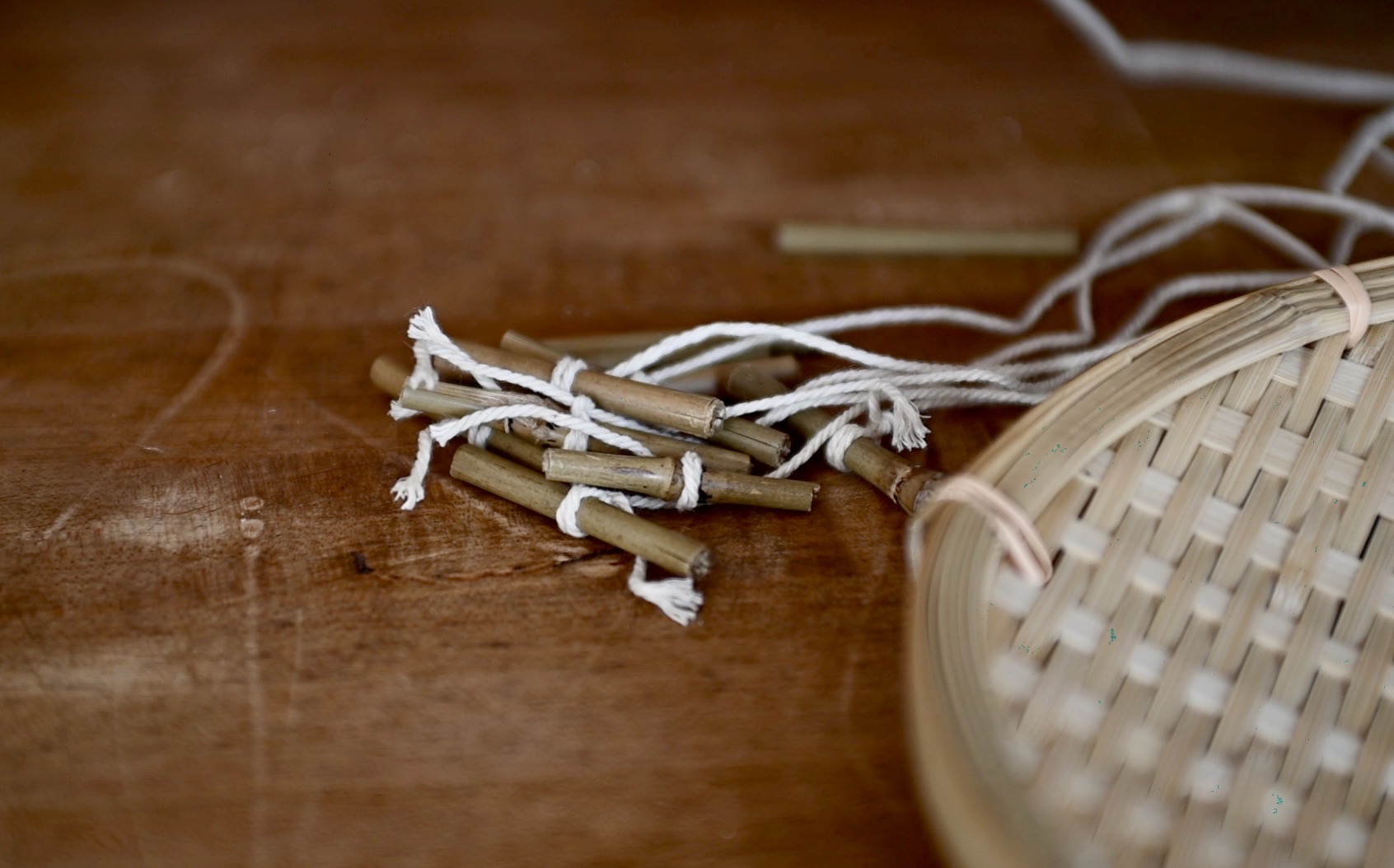
string with stick ends
- When the beans are cooked and soft, strain the beans to get rid of excess water, and let them cool.
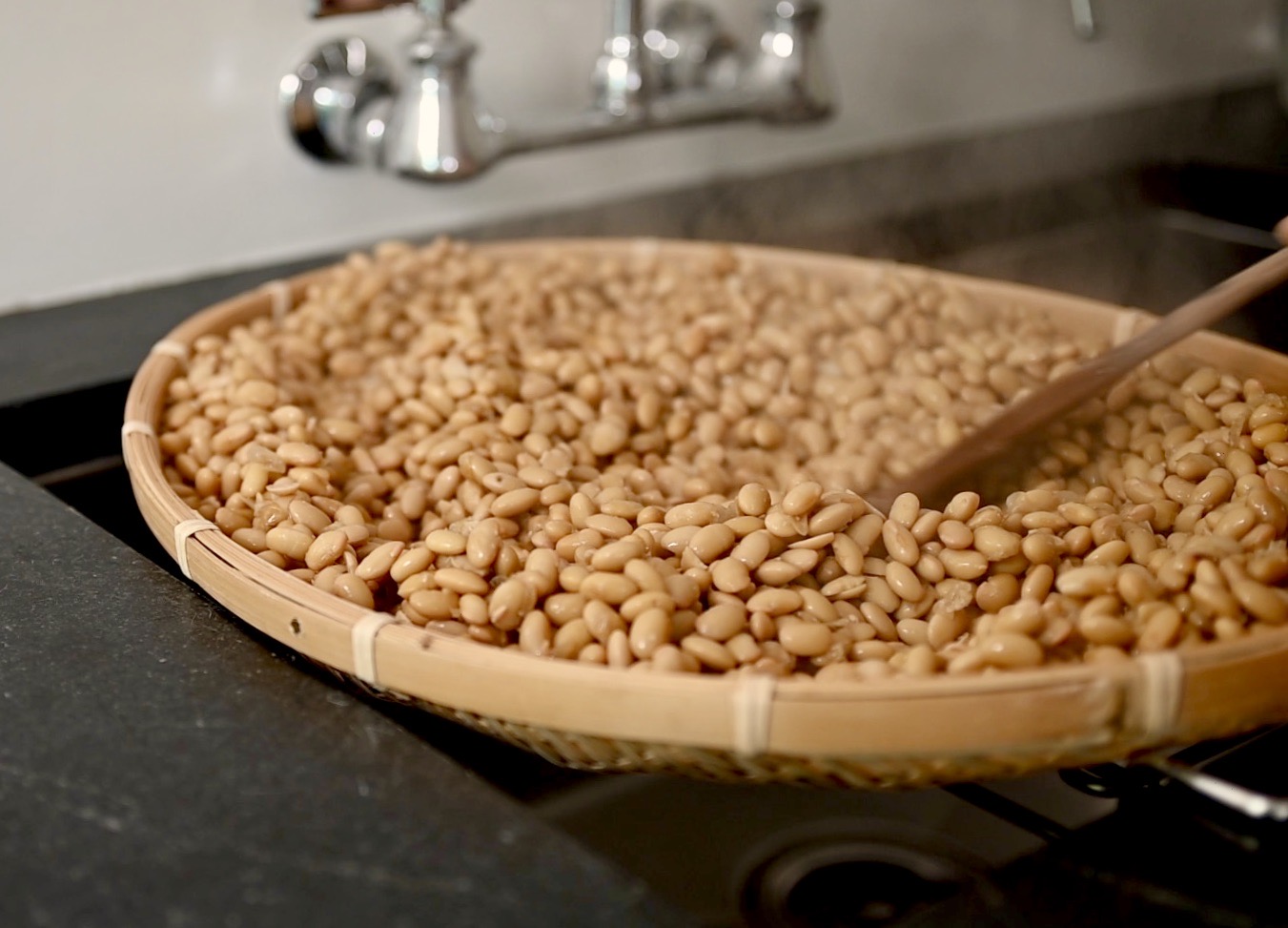
let the beans cool
- When the beans are cool, process them with a food processor. You can use a mortar too, but it’s very hard to do so.
- Making the bean balls: divide the paste into 8 portions, and shape each portion into a tight ball.
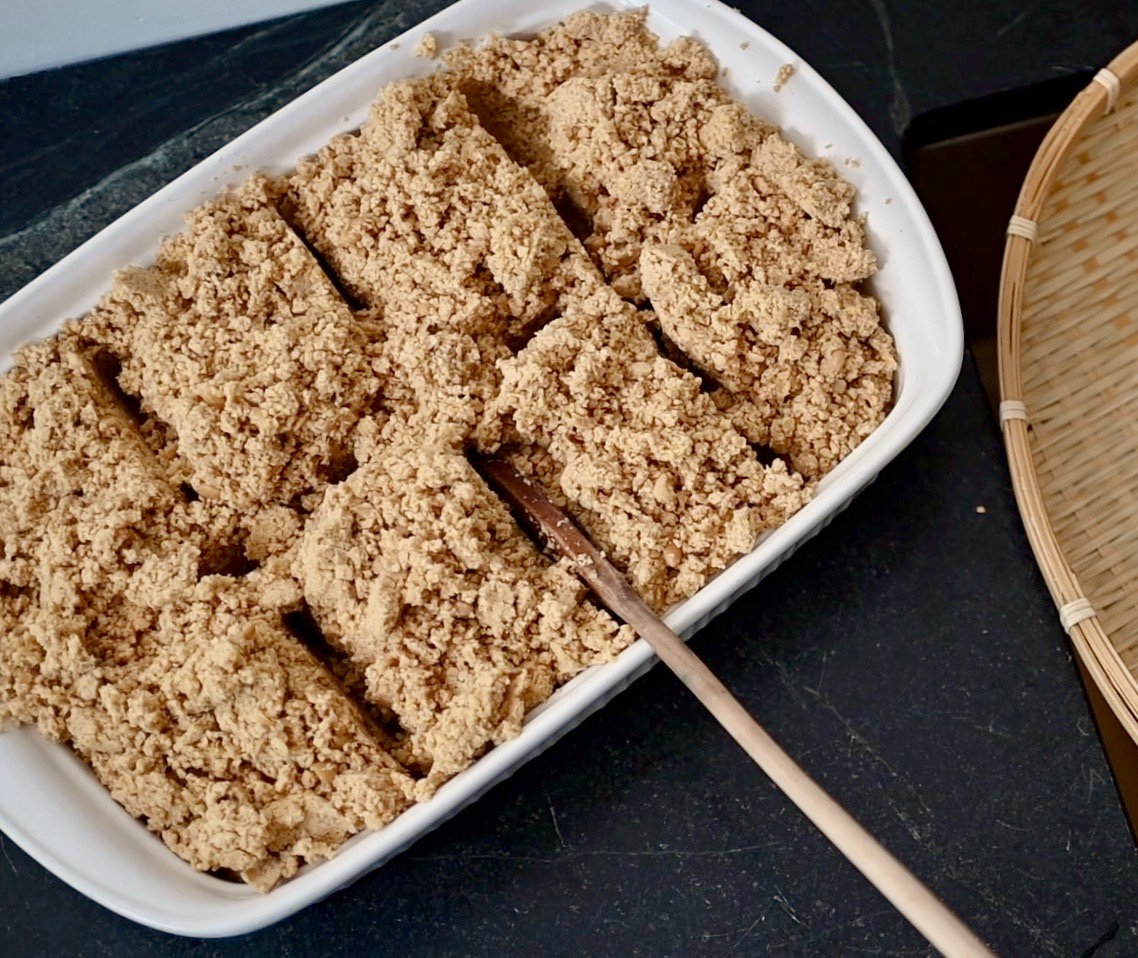
roughly divide the paste into 8 parts
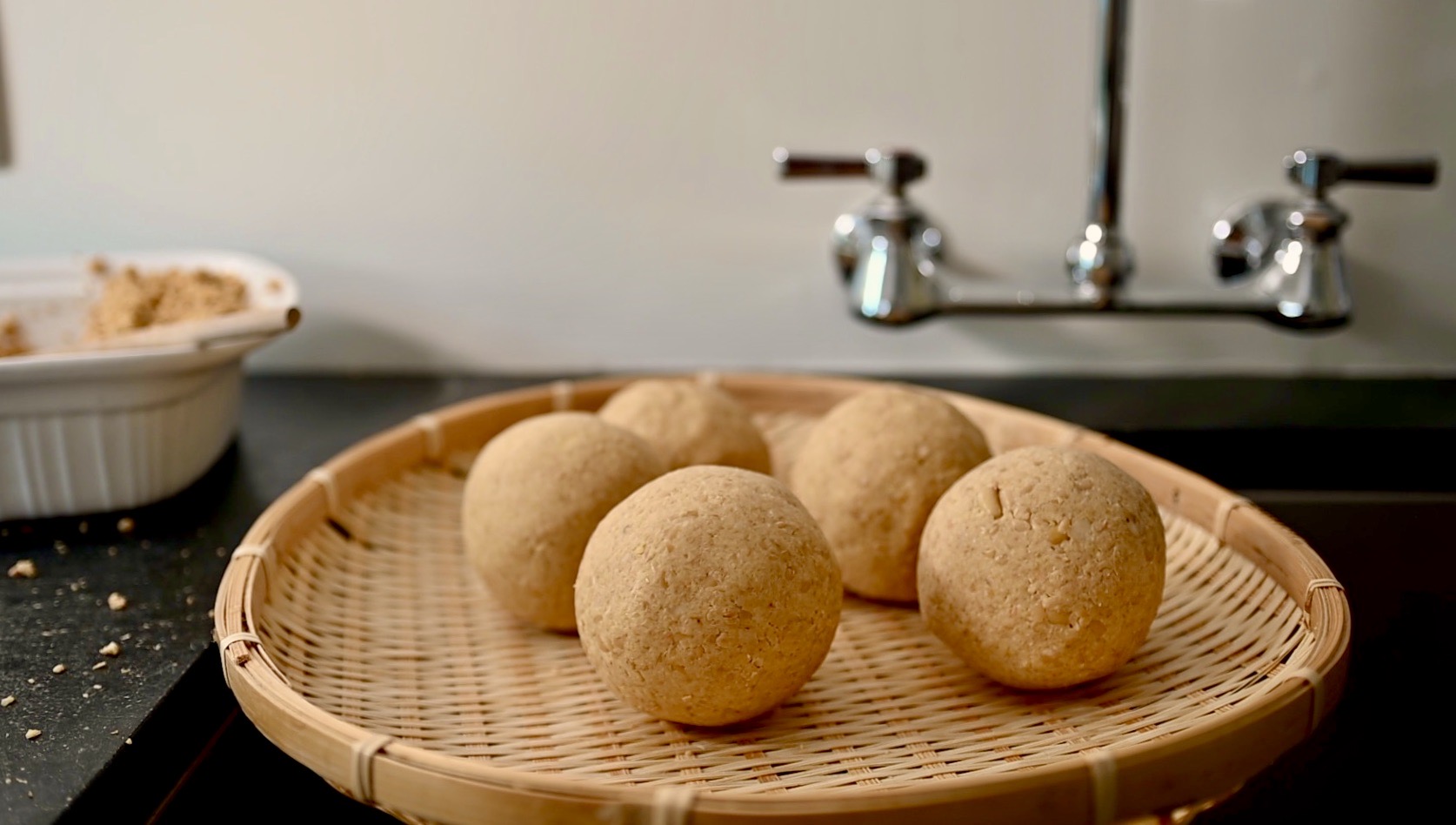
make the paste into tight balls
- Dry the balls in a warm area of the house. This might take a few days depending on the temperature of the house. (I leave mine near a heater) Turn them each day to make sure they are dried all around.

drying the balls in a warm area
- Hanging dry: when the balls are completely dry, it’s time to hang them to ferment. This stage is for the beans to capture good bacteria in the air that is essential for the fermentation. It might take a few weeks, so find a place that you don’t mind seeing them everyday. I hang mine by the pantry window and they are totally out of my way. I let them hang for about 5 weeks.
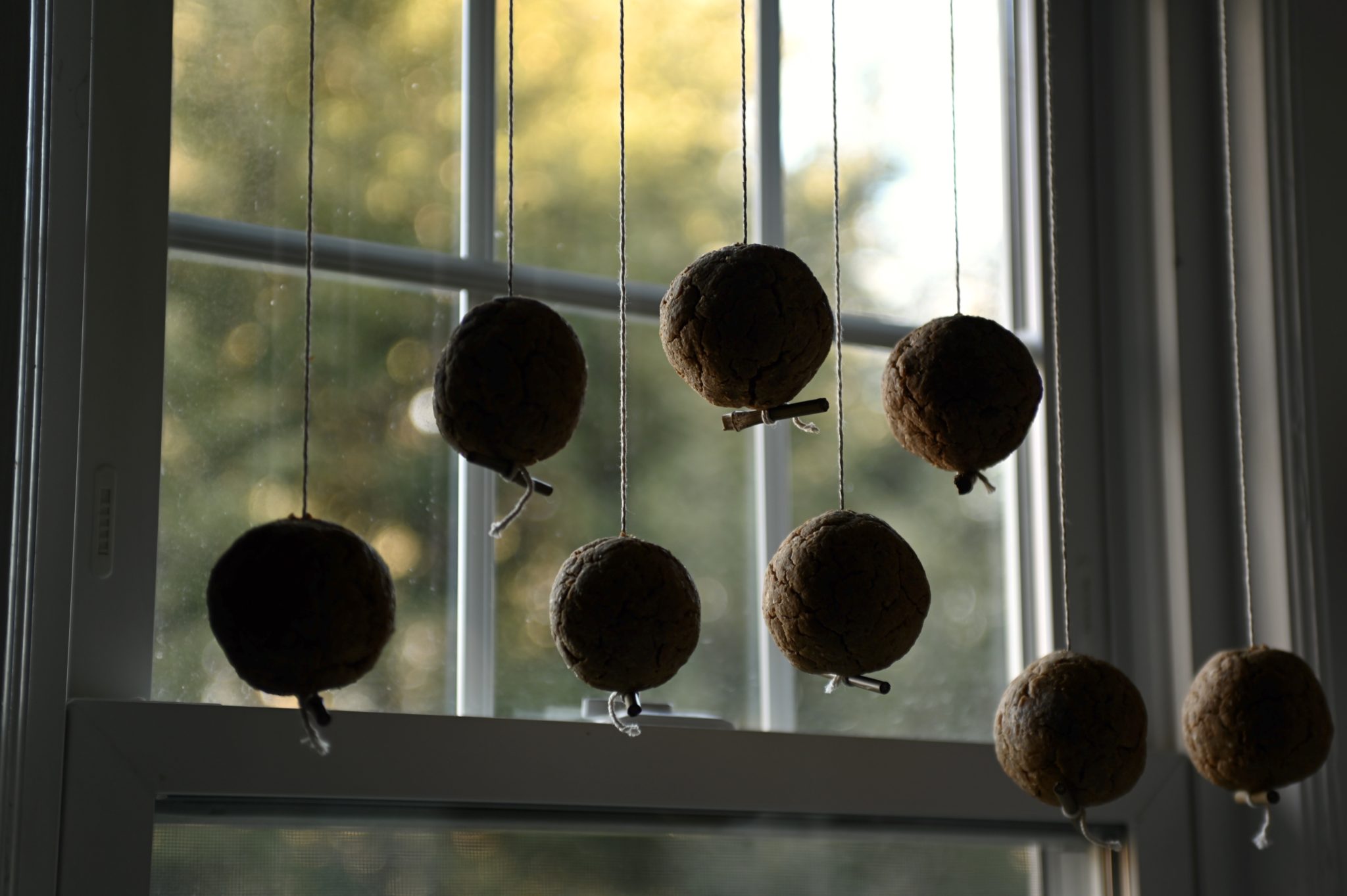
hanging the balls to capture bacteria in the air
- By this time you can see fungi growing between the cracks, and some on the surface. Remove the strings and save them for the next batch. Gently rinse the ball under water to wash off the dust during the hanging time. Let the water evaporate.
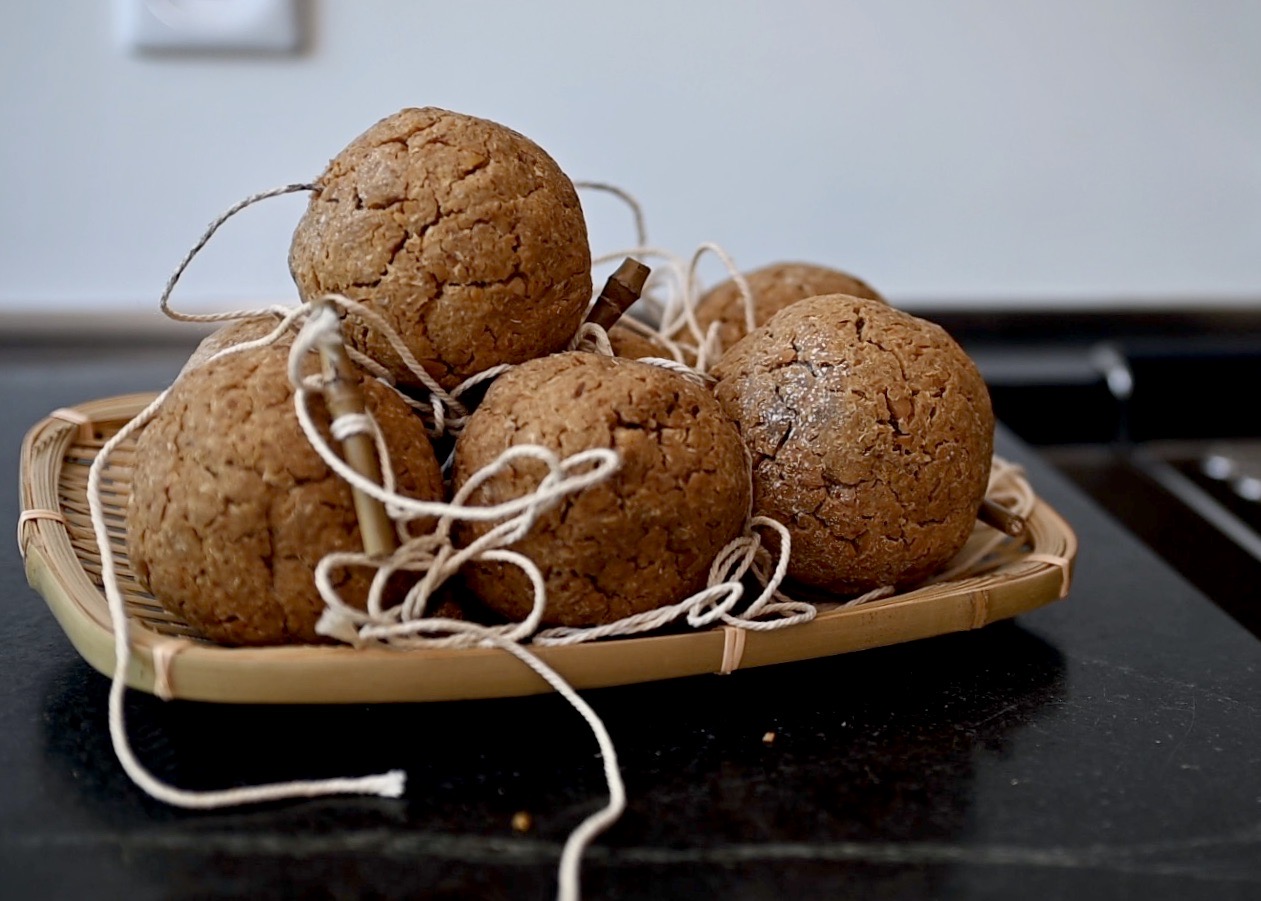
the bean balls after 5 weeks or so of hanging
- While letting the bean balls dry, wash the jujubes, chilis and charcoal, then let the water dry off of them too.
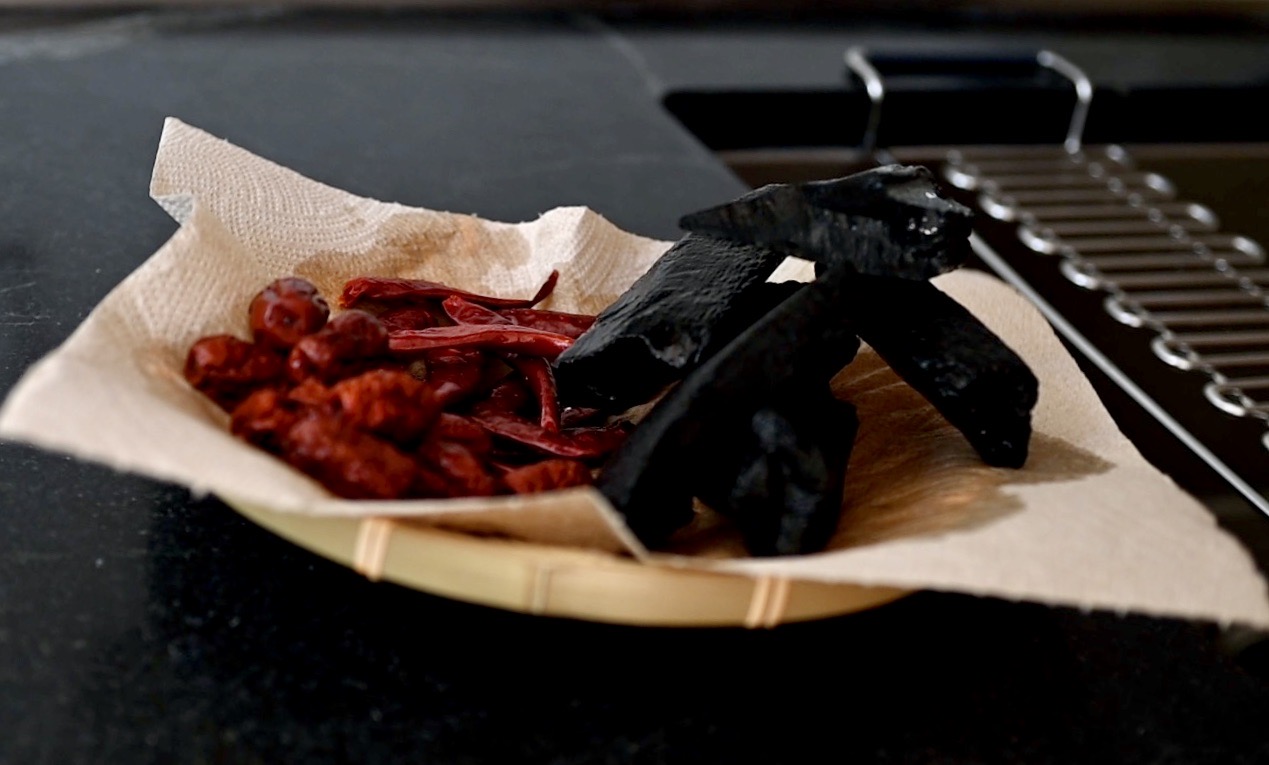
jujubes, chilis and pure wood charcoal
- Making the salt brine: In the sterilized glass jars, put 2 cups (.5 L) of hot water in each jar. (I put a piece of tape on the jar to mark the 2-cup level) Add the salt and vigorously mix. The hot water makes the salt dissolve faster. Then add 6 cups (1.5 L) of filtered, room temperature water to each jar. Stir to mix and let the salt dissolve.
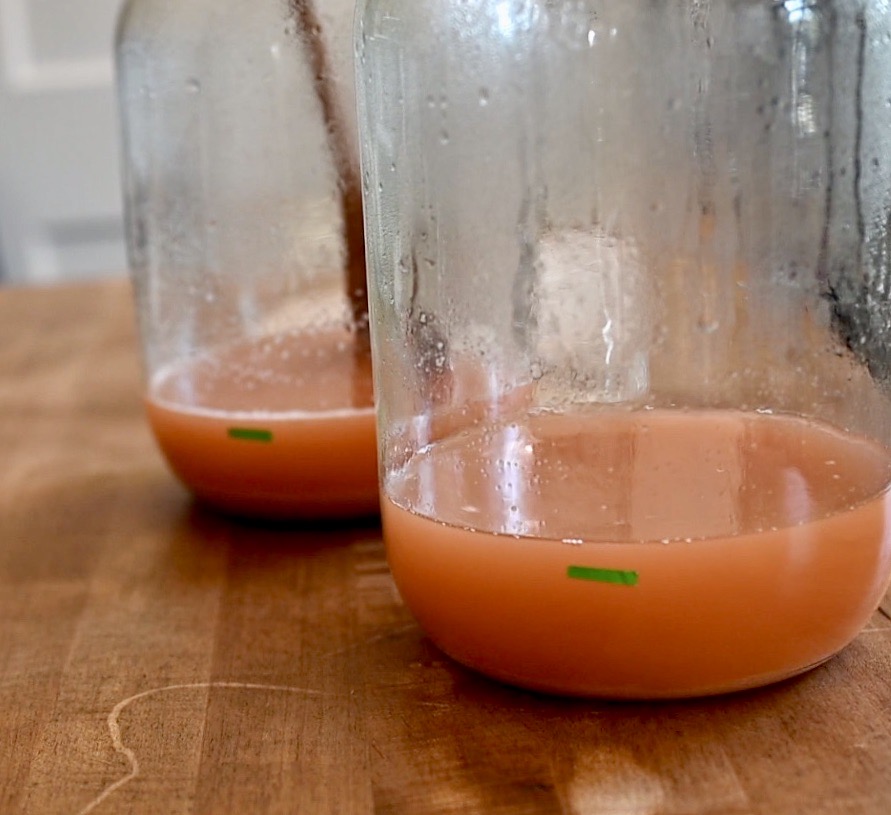
mix salt in hot water first
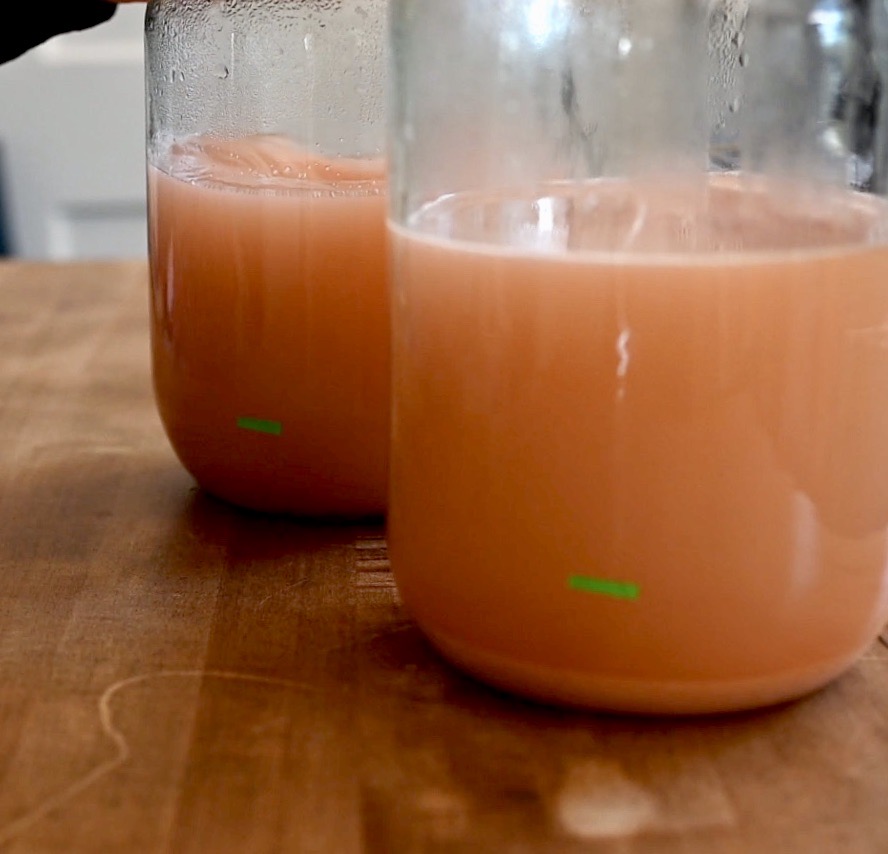
the salt brine should be at room temperature
- When the salt is dissolved and the brine is at room temperature, add 4 bean balls to each jar followed by the jujubes, chilis and charcoal. At this point, the bean balls are too dry to submerge and stay under the brine. Cover the jars with the cloth and leave them at room temperature. Note: this stage takes at least 12 months, so find an area where you are fine leaving the jars during this time.
- After 2-3 days the bean balls absorb the brine and become fully expanded. If the balls are not completely under the brine, add some more brine. Then cover the jars and put them back to ferment. Note: use the ratio according to this formula to make sure the saltiness is effective.
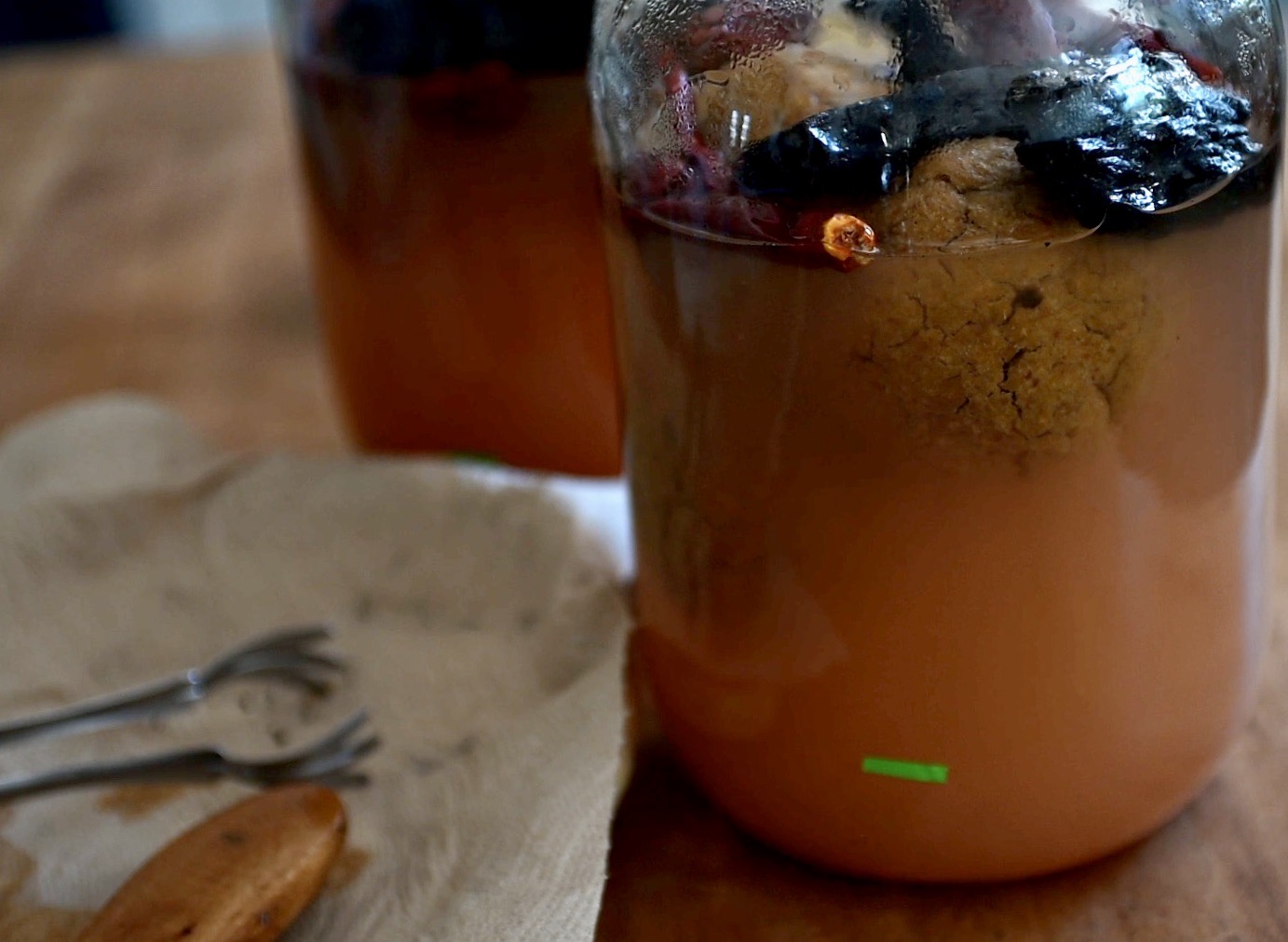
homemade soy sauce
- Fermentation: from now, check the jars once in a while. If you see white fungi that looks like mushrooms on the surface, don’t worry. Just leave it in there, I learned that it’s normal from Maanghi.
- See you again 12 months or so from now, I’ll show you how to do the next step then!
Have you made Homemade Soy Sauce? Please share it with me, I’d like to hear about it!